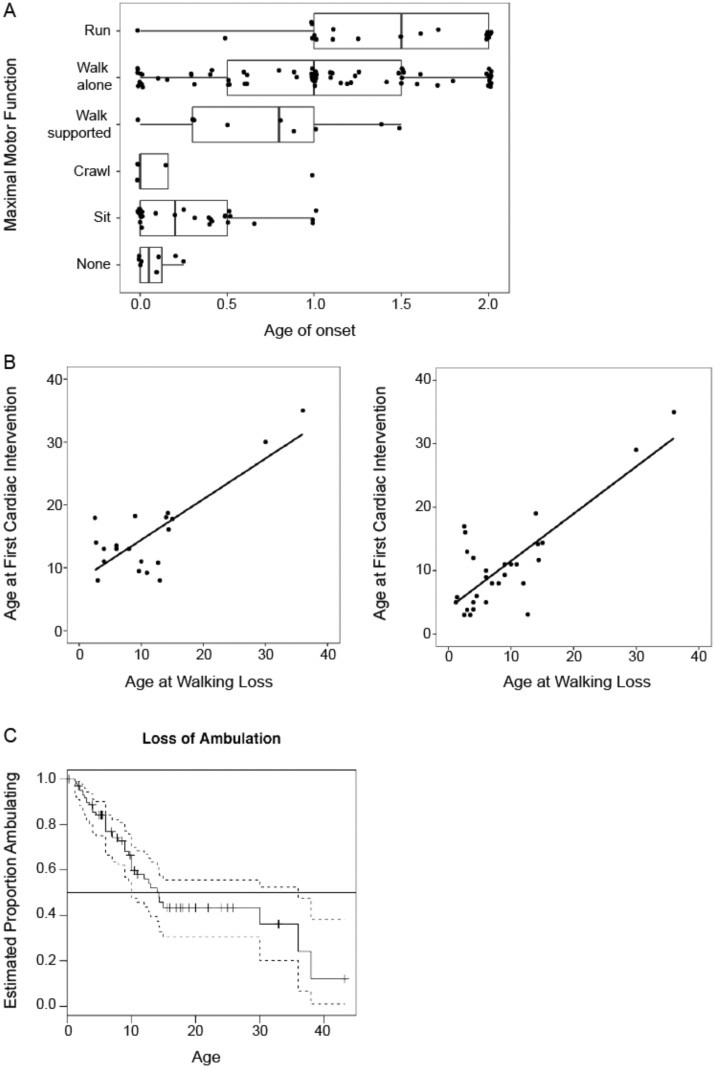Figure 1.
Clinical characteristics of the cohort. (A) Maximal motor function achieved for individuals at a given age of onset. This demonstrates that individuals with an earlier age of onset may still reach a maximum functional ability of independent ambulation; however, those with later ages of onset tend to have better maximal motor function (P < 0.01). (B) Age at first cardiac intervention (left panel) and age at first respiratory intervention (right panel) mapped against age at loss of ambulation. Although there is a strong relationship when all data is included (r = 0.80, P < 0.01; r = 0.81, P < 0.01, respectively), this relationship is greatly reduced after removal of the two individuals with late interventions (r = 0.22, P = 0.37; r = 0.38, P = 0.04, respectively). (C) Kaplan–Meier time to event analysis for loss of ambulation. About half of the individuals who acquired independent ambulation lost this ability by age 14 years.

